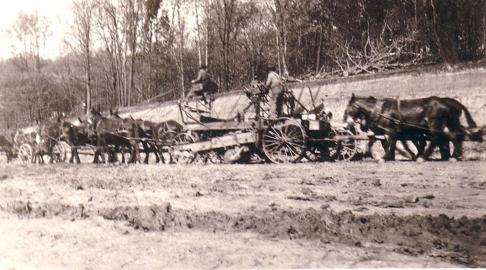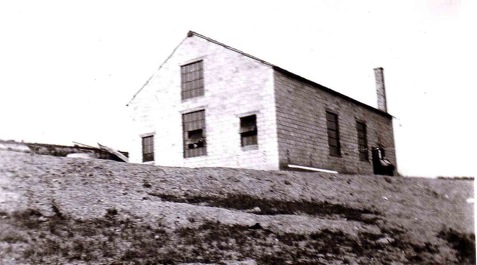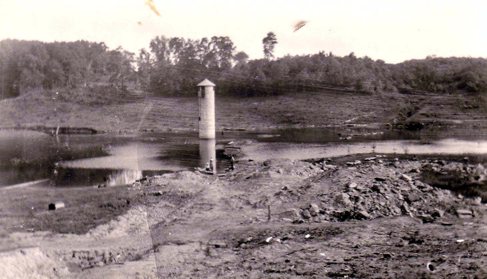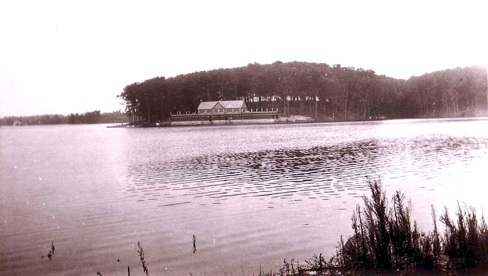BACKTRACKING
Early, Really Early, Lake Bracken
By Terry
Hogan
I have
written a couple of articles on the history of Lake Bracken and I donÕt have a
lot of new things to say. It was
constructed in the early 1920Õs to meet the demands of the thirsty steam
locomotives of the CB&Q Railroad.
It served that purpose for many years, while also becoming the Knox
County Country Club. This name was
later changed to Lake Bracken Country Club. It is now incorporated and no longer affiliated with the
CB&Q.
Nearly all
the old structures associated with the pumping of water from the lake to serve
the needs of ÒThe QÓ are gone. The
old pump house was demolished some years ago to make room for some new building
lots. The old brick tower that was
the intake still remains sticking out of the center of the lake, but the old
conical roof has collapsed with time and rot.
 The primary
reason for this article is to reproduce and distribute some early photos of the
construction phase of Lake Bracken that were generously provided to me by
Lowell Griffith. Apparently the original photos have been in his family for
years.
The primary
reason for this article is to reproduce and distribute some early photos of the
construction phase of Lake Bracken that were generously provided to me by
Lowell Griffith. Apparently the original photos have been in his family for
years.
Two of the
photos show that at least some of the construction work was done by mule
power. A careful examination of
the photos will show that there were six mules harnessed to the front of the
wagons and another two mules that appear to have been firmly harnessed in a
method to push the wagon. The
front and rear mules appeared to have separate drivers. Given the configuration
of the wagon, it appears to have been some type of earth mover. It is equipped
with metal wheels and the man standing in the wagon bed appears to have a wheel
to adjust something. Perhaps it is
an early grader, accounting for the high horse (oops, mule) power? IÕd like to say I recognize where the
mules were located, but I cannot.
Two other
photos show the early pump house, taken from what would become the lake bottom,
and the water intake structure. A
careful study of the latter will show a temporary raised road was constructed,
presumably to stay above the rising water level,
 to finish some task.
to finish some task.
Finally,
the last photo is a distant photo of the old, and dearly loved, club house that
burned. Two things are worth
noting. Although the ground floor
is complete, the top floor was missing the two wings of the building that
served as the Òping pong roomÓ and the dining room. They obviously were added at a later date. As Lowell pointed out to me, the old
swinging bridge is not in the ravine next to the clubhouse. As the bridge was constructed in 1928,
that places this photo in the mid-1920Õs era .
.
ThatÕs
about it. No keen insight. It is just about some neat old photos that have
survived and have been generously shared by Lowell Griffith with those of you
who care about Lake Bracken and its early history.